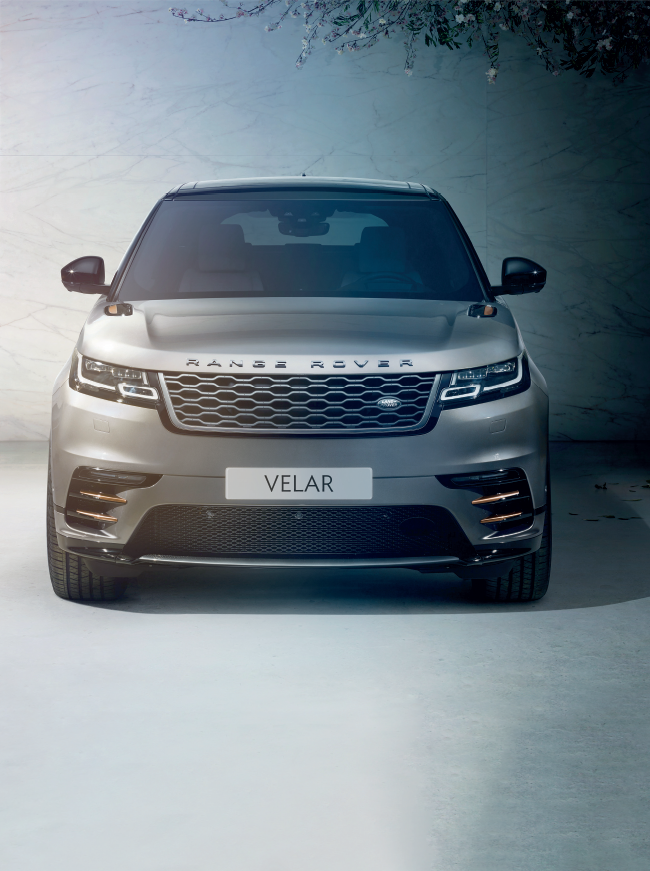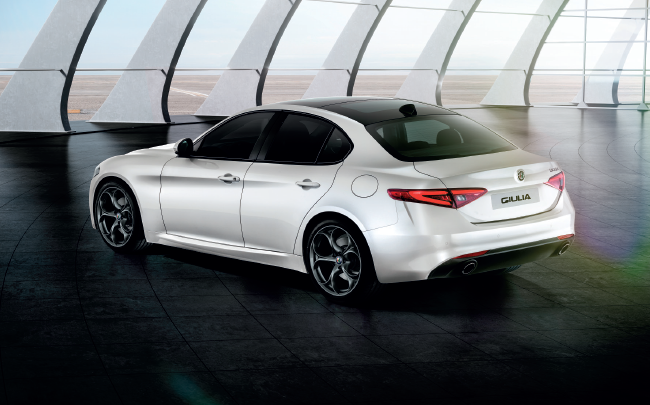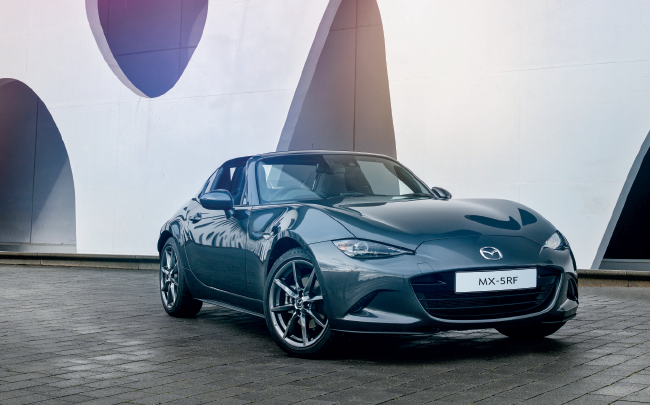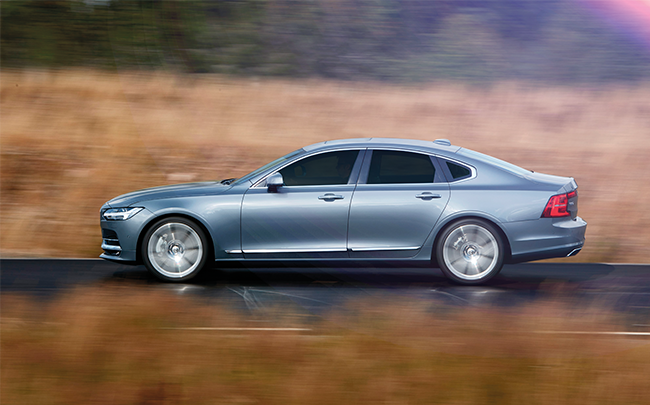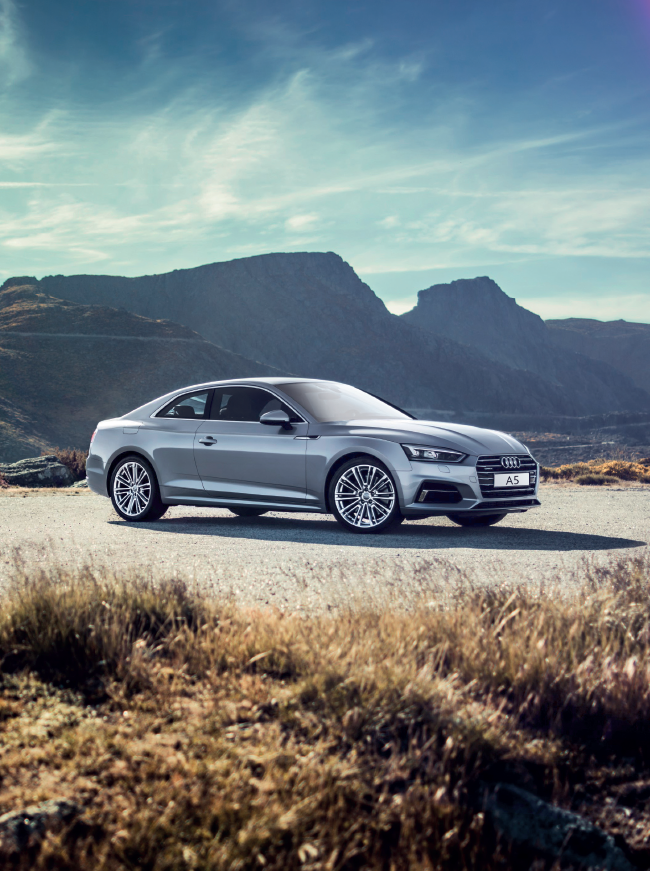The idea of design being a powerful motivator is nothing new. And the notion that classic design takes us back to a simpler, better time has been a canny technique used by marketers.
As technology fashions ever more homogeneous cars, design has become the primary weapon in manufacturer differentiation. Engines may have similar outputs, safety features may come from the same supplier, and electronics may increasingly feed into a universal digital grid – but design studios are still telling a story of a marque and its history.
Mercedes-Benz
Early to the current trend of retro design were the folks from Stuttgart. Mercedes embraced a vanguard approach with the release of the current C-Class in 2014, a volume seller that harked all the way back to the curvy Benz days of the 1920s, recalling the grace and elegance of the 500K. It heralded the repositioning of the brand as a purveyor of unashamed luxury, leaving the sports edge to its recently acquired performance wing – AMG.
The retro detailing extended to the interior too, with an emphasis on overstuffed seats, jewelled switchgear and an appearance of bespoke exclusivity, again referencing the heyday of the sports saloon. The strategy found international favour and recent launches – including the Mercedes-Benz E-Class, GLC and S-Class coupés – have accented that approach, suggesting extreme pampering and sumptuousness.
That they are still mass-produced cars is testament to the strides made in production-line engineering – the handcrafted look can now be dialled in.
Under the skin, of course, things are most definitely new millennium – the industry’s must-have, high-end lunchbox of adaptable air suspension, smart lights, adaptive cruise control and impact alerts are there (at a price), as is the free servicing and extended warranty.
Of the newcomers, the GLC Coupé is the most interesting. It is the sporty version of the very popular, very able GLC SUV and unashamedly apes the look of BMW’s successful X4 – itself a shrunken version of the steroidal X6.
‘Sports coupé’ is a strange idea when linked to an SUV but if the bloated looks leave you cold, step inside and take it for a drive. The GLC Coupé is a delight – light, responsive, interesting inside and the spatial volumes work well.
It’s one of those rare cars that feel right from the get-go. An unsung highlight is the frameless doors, light and manageable, rather noticeable in an age of doors that are getting ever heavier and more unwieldy.
Alfa Romeo
Big brother Fiat is arguably the grandaddy of retro chic, given the sway held by the Fiat 500, the Fiat Abarth 595 range and recently (re)released Spider – essentially a reskinned Mazda MX-5.
Its sister brand Alfa, in the doldrums for years, has been offered (yet another) lifeline in the Giulia, the marque’s genuinely seductive new sedan, with a name unabashedly plucked from the annals of Alfisti history. But it is, we are pleased to report, a worthy successor and not simply a badge job.
In blood-curdling V6 QV guise, it delivers a 1966 hammer blow of Monza, Imola and la dolce vita. The howl, the crackle, the barrel-chested bravado behind the iconic trilobe grille all hark back to a time when emissions were nocturnal and race safety gear comprised a pair of goggles and a blood-red scarf.
The design too reflects a focus on what was good ‘way back when’ – the lines mimic the Disco Volante of the 1950s and inside, the hooded binnacle treatment of the double instrumentation pods and hand-stitched appearance of the leather (it isn’t) is pure 1969.
The Giulia should fix what the 1980s broke for Alfa and restore Turin to its rightful place as the brand for petrolheads – no embarrassment, no excuses.
Land Rover
If Land Rover’s line-up wasn’t already complicated enough, the Range Rover Velar slots in between the Evoque and the Sport. It is, though Land Rover are at pains to deny it, a Jaguar F-Pace under a svelte, aerodynamically advanced skin.
That as may be, the essential elegance of the design is indisputable, one that appears to refer back to the simplicity of the original Range Rover. Nothing else is heritage-based though – all the technology is cutting edge. The latest Land Rover toy is its Touch Pro Duo system. Essentially, it comprises two 10-inch touchscreens, similar to Volvo’s tablet (one-upmanship at its best), placed one on top of the other.
The top screen is the familiar portal to infotainment and navigation needs, while the lower screen, ominously if you like a good old-fashioned knob, replaces many of the buttons for climate control and terrain response.
Other manufacturers – Toyota and Peugeot, most notably – have attempted to replace buttons with touch detailing and found little love for the move. Even if Land Rover’s screen tilts by up to 30 degrees, it may have a hard sell on its hands.
Mazda
Speaking of la dolce vita, ironically it was Japanese manufacturer Mazda that reintroduced it to the world in 1989 with the first MX-5, a reimagining of the iconic European two-seater of the 1960s.
Almost 30 years on and the MX-5 is in its fourth generation, still wildly popular and about to put its hat on. It’s a hard hat, too – the new MX-5RF sports a retractable hardtop in the style of the Mercedes SLK (now the SLC), taking away some of the joie de vivre of the original but adding a welcome dollop of safety in an unpredictable world. It must be pointed out that the current ‘standard’ MX-5 is the best iteration of the car since the first model – few current cars offer as much immediate, drive-by-wire, dialled-in fun as the MX. And at that price, none are as addictive.
Volvo
No one would suggest that Volvo’s current orientation is backwards – the game-changing XC90 SUV and brave one-engine-fits-all strategy very much of the moment. But with the introduction of the flagship S90 sedan comes a degree of yesteryear. And understandably so – big Volvos were a feature of the automotive landscape for decades and the Swedish firm felt the lack of a competitor in the executive market keenly.
The S90 has surprised many for its subtlety – a series of almost imperceptible planes and curves that suggest restraint in an era of opulence (or so Mercedes-Benz suggests). But look back down the S90’s bloodline, beyond the boxy clunkers of the 1970s, ’80s and ’90s – and the Amazon, much loved in SA, recalls a curvier era.
If the exterior mumbles restraint, the interior shouts contemporary. Volvo’s trademark tablet infotainment screen takes pride of place in the centre console. It is the conduit to all of the car’s many functions, underlining the marque’s assertion that the future belongs to the connected. And when the connected get their fingers (and touchscreen) dirty, Volvo even provides for that – a microfibre cloth comes standard to keep the screen pawprint-free. Neat touch.
Audi
Audi has pulled off arguably the trickiest refresh in motoring history with the introduction of the latest A5. The original was so beautiful it won countless design awards all the way through its life. Happily, the new car leaves the prettiness alone – improving the interior (which badly needed it) while leaving the exterior more or less as it was.
That was smart – Walter de Silva’s gorgeous original drew inspiration from the Ferraris and Maseratis of the 1960s, working with the concept of the period’s popular GT coupé form: useful-sized boot, long bonnet, spacious cabin. The new car features Audi’s popular virtual cockpit, a digital display in front of the driver that allows for the navigation map to ‘wrap around’ the speedometer and rev counter. It also features the Q7’s flat, Porsche-like gear shifter and bulletproof quality. If Mercedes-Benz is going down the road marked sumptuous, Audi prefers the route marked timeless.
De Silva left the realm of car design to open his own shoe shop in Italy. When asked why he had stepped away from it all, he said that he’d simply changed his location and that – be it shoes or cars – he would always be a designer, he told Bild magazine, ‘because design is everything in life’.
Renault
Nowhere is De Silva’s sentiment as true as in motoring, and the ‘it’ car of the moment underlines that. Renault’s audacious phoenix, the Alpine A110, was the toast of the 2017 Geneva Show, a reimagining of one of France’s best-loved sports stars. Blue blooded, it recalls all that was triumphant about Renault in its prime. And that’s the point – to stand apart from the crowd. Good news indeed for car fans who can look forward to a host of daring, imaginative models on the horizon soon.

